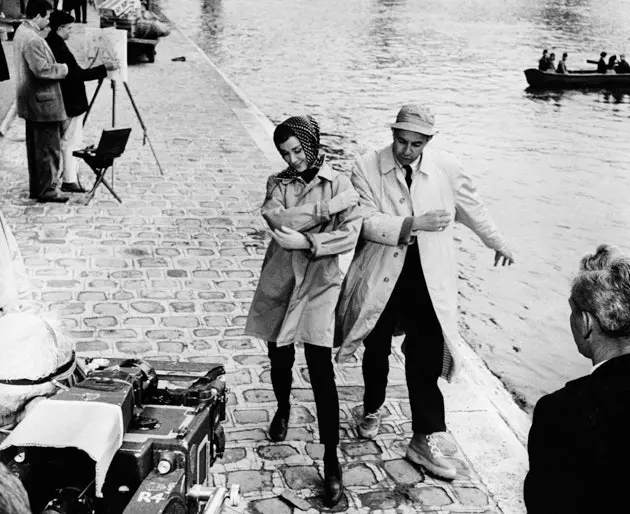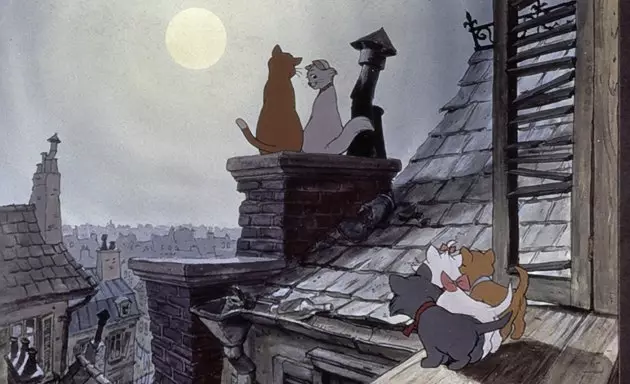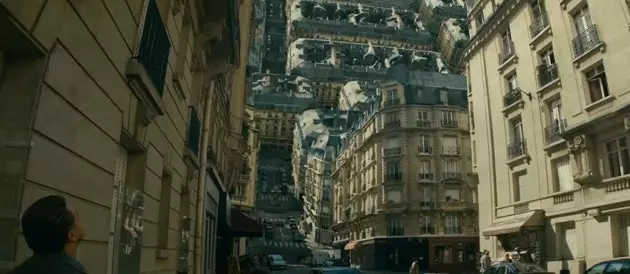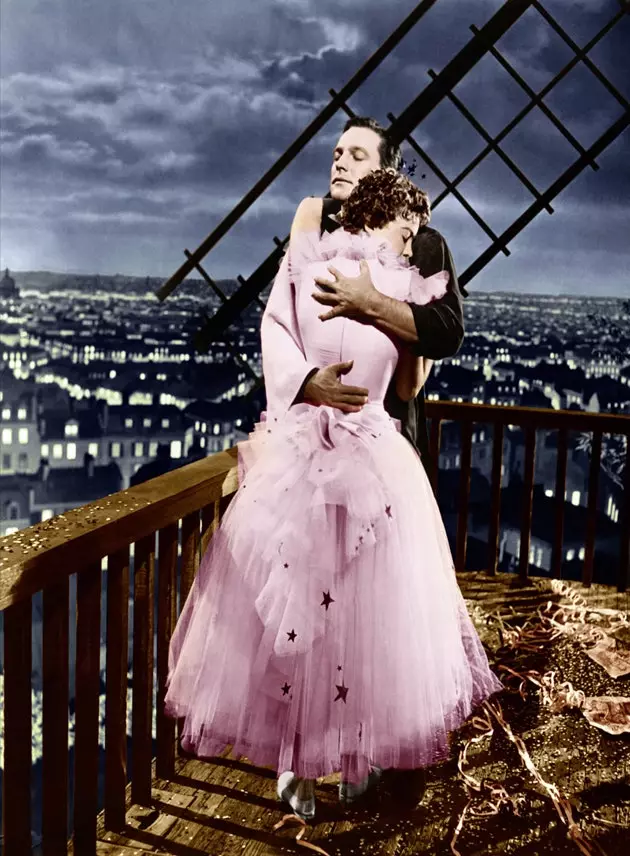
Audrey Hepburn rehearsing a dance for Stanley Donen's 'Funny Face' on the Seine
"We'll always have Paris" , said Humphrey Bogart to a tearful Ingrid Bergman in the famous final scene of 'Casablanca'. This prescient phrase seems to have been the leitmotif of the American film industry, which has exploited the irresistible clichés of the Parisian city over and over again: luxury, eroticism, pleasure and sophistication among others.
In fact, the French capital is, by far, the foreign city that has been portrayed by American cinema the greatest number of times, although in many cases the recreation of Parisian magic has not gone beyond simple prefabricated scenarios. A good example of this is the director Ernst Lubitsch who placed a dozen of his films in the French capital without shooting a single shot there: "There is the Paris of Paramount, that of MGM and of course, the real Paris" said the director with humor.

The Aristocats, "everyone wants to be jazz cats now..."
The exhibition, arranged chronologically, begins with the first films of the silent film era. The medieval city of Notre Dame, The Three Musketeers or the French Revolution are the records that are repeated most frequently. From the 1920s to the 1940s, the films portray a refined, worldly and erotic city , where Ernst Lubitsch places his refined sentimental intrigues and his sophisticated characters ('Woman for two', 1933). The fifty will be marked by musicals, technicolor and a obsession with the Belle Époque and the can-can , through films such as 'An American in Paris' (1951) by Vicente Minneli, 'Moulin Rouge' by John Houston or 'French Cancan' by Jean Renoir.
It is from the 50s that American filmmakers begin to film in Paris. 'Charade' (1963) by Stanley Donan and 'Gigi' (1958) by Vicente Minneli are two good examples, without forgetting Black Edwards with 'The Pink Panther'.
A special place in the exhibition is occupied by the figure of Audrey Hepburn, to which the organizers attribute the fair title of 'Miss Paris' . And it is that few actresses have so faithfully represented the so-called “Parisian chic” . His film career is also inextricably linked to this city, of the 27 films he starred in, 8 are set in Paris: 'Sabrina', 'Ariane', 'Charade' or 'How to steal a million from a millionaire' are unforgettable productions where Hepburn acts as an exceptional ambassador of the City of Light.

Paris as we have never seen it, 'folded', in 'Inception'
In the 70s a certain tiredness of the Parisian “cliché” is accused and the number of productions decreases considerably to return with renewed forces in the 80s , in which the city becomes the setting for police and action films. The icons of pleasure and sophistication remain, but now the productions reflect new nuances, a disturbing, labyrinthine and mysterious city, definitely more contemporary. 'Frenético' (1987) by Roman Polanski inaugurates this genre followed by many others until the most recent 'The Da Vinci Code' or 'Inception'.
The exhibition brings together numerous excerpts from films, photographs, costumes, posters …We can enjoy the sketches of the sets of 'An American in Paris' or 'Midnight in Paris' the dresses designed by Huber de Givenchy for Audrey Hepburn or the monumental statues created by the decorator Dante Ferreti for Scorsese's 'The Invention of Hugo' . In short, "Paris seen by Hollywood" is a journey through more than a century of fertile correspondence between the two cities. Movie buffs and fans of the City of Light are in luck.
“Paris seen by Hollywood”
Hôtel de Ville From September 18 to December 15. Free.
Open to the public every day except Sundays from 10 a.m. to 7 p.m.

Gene Kelly and Leslie Caron in 'An American in Paris'
